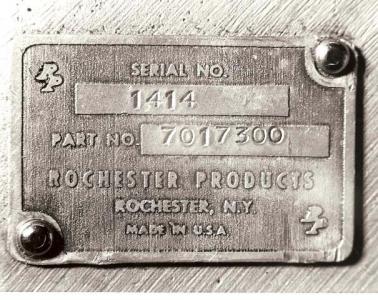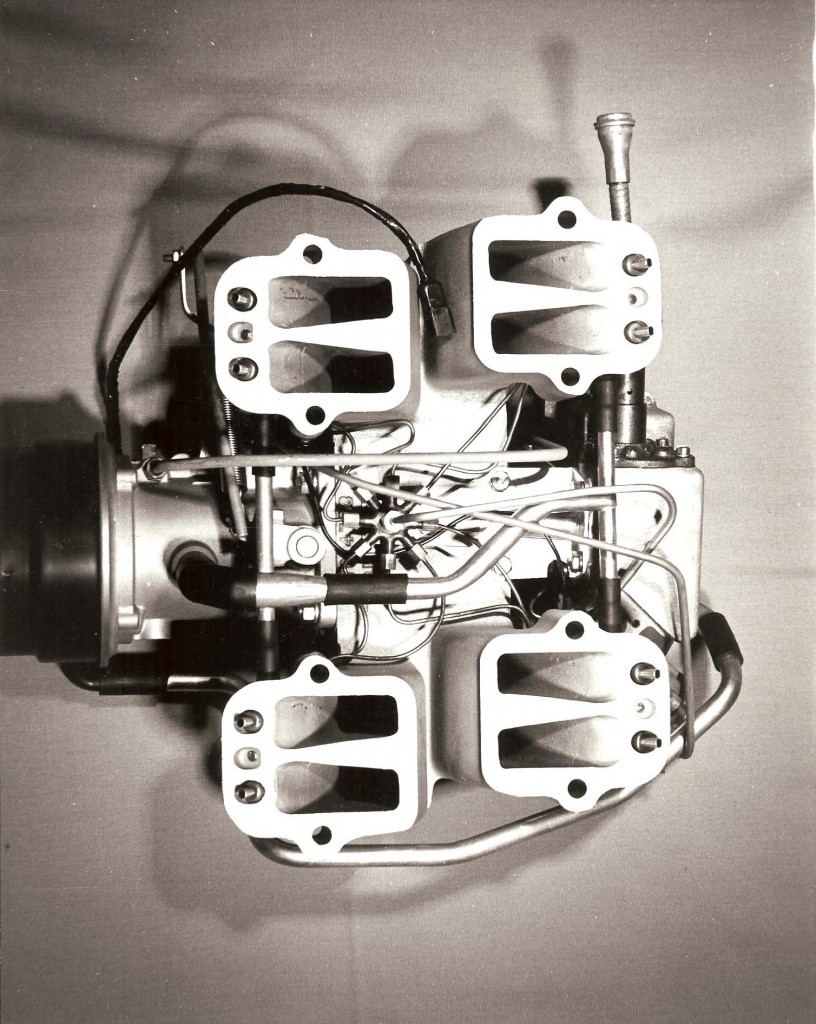Fun F.I. Facts
Rochester fuel injection was and is still a pioneer in terms of automotive engineering. In the late nineteen fifties, performance engines and racing were taken to a whole new level. Street racing was as simple as walking into your local Chevrolet dealership and placing a customized order for a new car. Goal: big motor that goes fast.

Unfortunately, GM had many engineering challenges on its hands and the evolution of the FI unit was at full bore. Upon a simple examination, many people still think an FI unit is merely a fancy carburetor. Others revel in its design as a “controlled fuel leak” between the balance of air and fuel reliant on the balance of venturi and plenum vacuum. To us, it is an engineering marvel.
It is hard to believe that so many casted parts, levers, tubes, wires when mixed with the heart and brain (axle link and spill valve) can be so much fun to repair. Every unit has a personality and a unique fingerprint. Rochester manufacturing held itself to factory specifications but even still, each unit has its own inherent characteristics (starting, enrichment, idling and wide open throttle). Rochester fuel injection units were available across many different GM product lines. Their evolution as a result of design changes lead to many different part numbers as seen below.

Rochester Fuel Injection Production Summary
13,289 57-59 Passenger cars and 57-65 Corvettes
544 57-65 Service and training
447 57 Pontiac Bonneville
511 58 Pontiac all models
5 ? Cadillac
? Oldsmobile (patents filed
? Buick (patents filed)
14,791 Total
- F.I. available from 1957-65 with 18 different part numbers (I.D. tags), 2 were Pontiac
Rochester tag part numbers by year- Rochester summary
| Part Number | Year |
| 7014360 | 1957 |
| 7014520 | 1957 |
| 7014800 | 1957/8 |
| 7014800R | 1957/8 |
| 7014900 | 1958 |
| 7014900R | 1958/9 |
| 7014960 | 1957/8 |
| 7017200 | 1959/60/61 |
| 7017250 | 1959/60/61 |
| 7017300 | 1959/60 |
| 7017300R | 1959/60 |
| 7017310 | 1960/1 |
| 7017320 | 1960/1 |
| 7017355 | 19962 |
| 7017360 | 1962 |
| 7017375 | 1963 |
| 7017375R | 1964 |
| 7017380 | 1964/5 |

R means “recalibrated” per RPD documents. As you can see, there were as many as six different part numbers available in the first year of production in 1957. The majority of units fell into five part numbers (4360, 4520, 4800, 4800R, and 4960).
For example, when the 4360 was launched, it had one balance tube and two nozzle vent tubes which required a unique fuel meter cover.
As production of the 4520 started, the fuel meter cover changed and the air cleaner assembly used only one of the previous three vent tubes. These types of simple engineering changes lead to the uniqueness of each and every part number and each unit as a whole.
Over the years, many units were removed from cars due to unreliability or better yet, difficulty in locating someone who understands how to fix one properly. On went a carburetor and the unit either went to the trash heap or into someone’s storage.
Many units have successfully stood the test of time and retained many of their key parts. Others are not so lucky and eventually wound up missing critical parts or have had incorrect pieces substituted.
